Winter has come to the sidewalk garden.
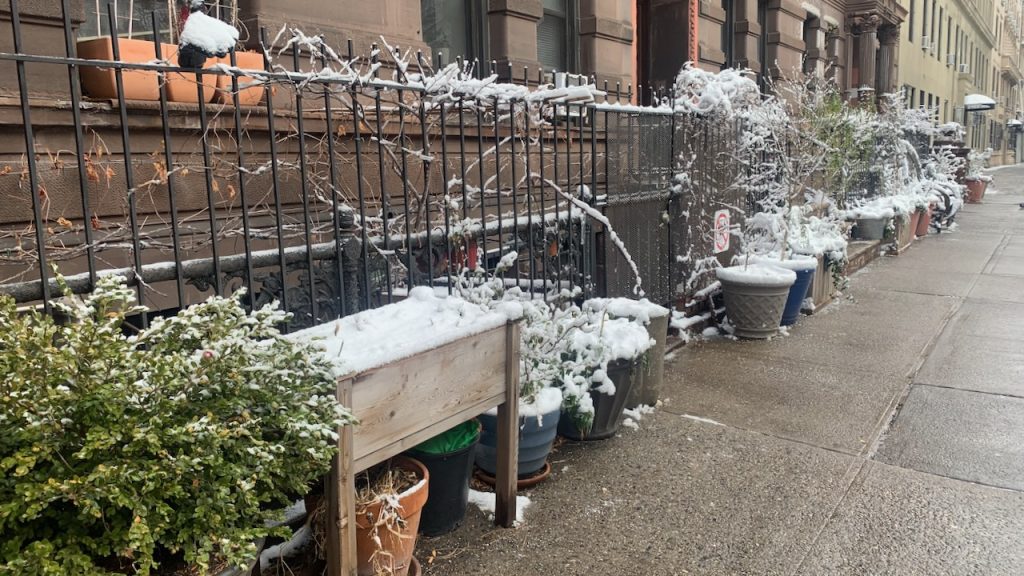
Sidewalk Greenspace on New York's Upper West Side
Winter has come to the sidewalk garden.

I’m super pleased to have successfully created a spot where folks can stop and sit for a moment to catch their breath on their way home… and I’m looking forward to this area being a flurry of green in a few weeks.
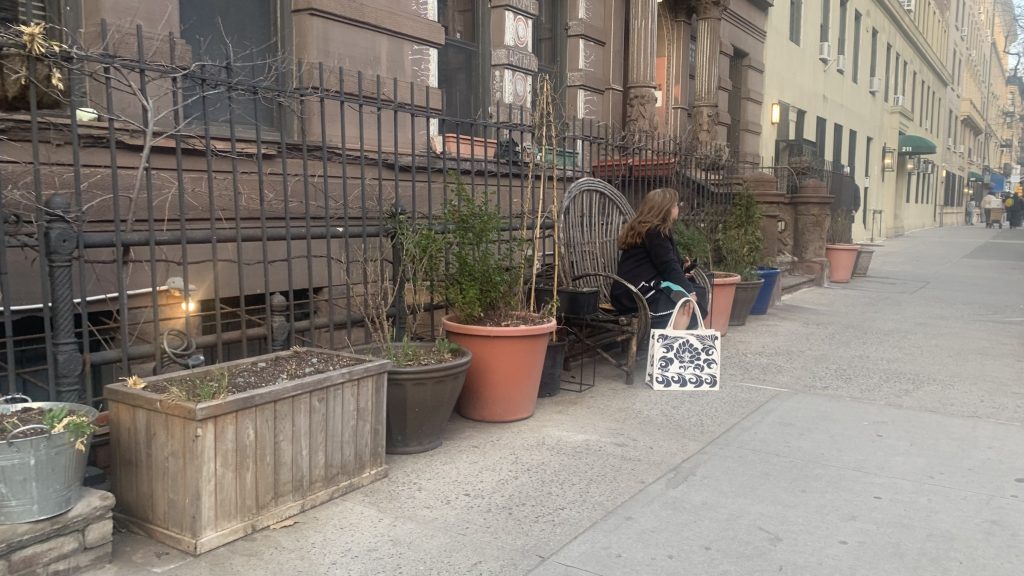
After a very stressful couple of days, this weekend’s drama around the sidewalk garden appears to have receded.
The details are still a bit fuzzy, but it now seems like the city inspector didn’t actually rule the garden illegal — instead, they noted an unrelated issue with the area in front of the building, and somehow the two issues got mixed together.
My confidence is still a bit shaken, but I hope that all of this is now behind us, and I greatly appreciate the support I’ve received from so many of our neighbors over the last few days.
The one bit of good that came out of all of this is that in the course of the weekend’s frenzy, I moved all of the planters, swept the entire area, and put everything back in an organized fashion, so I’ve gotten a jump on the spring cleaning that I would otherwise have had to tackle next week.

I’m still gathering details, but earlier today I heard second-hand that a city inspector had discovered some problem with the sidewalk garden and it might need to be cleared.
I’m working to get official confirmation of this order, and if necessary, to find new homes for all of the flowerpots and plants that have made their homes here over the last decade.
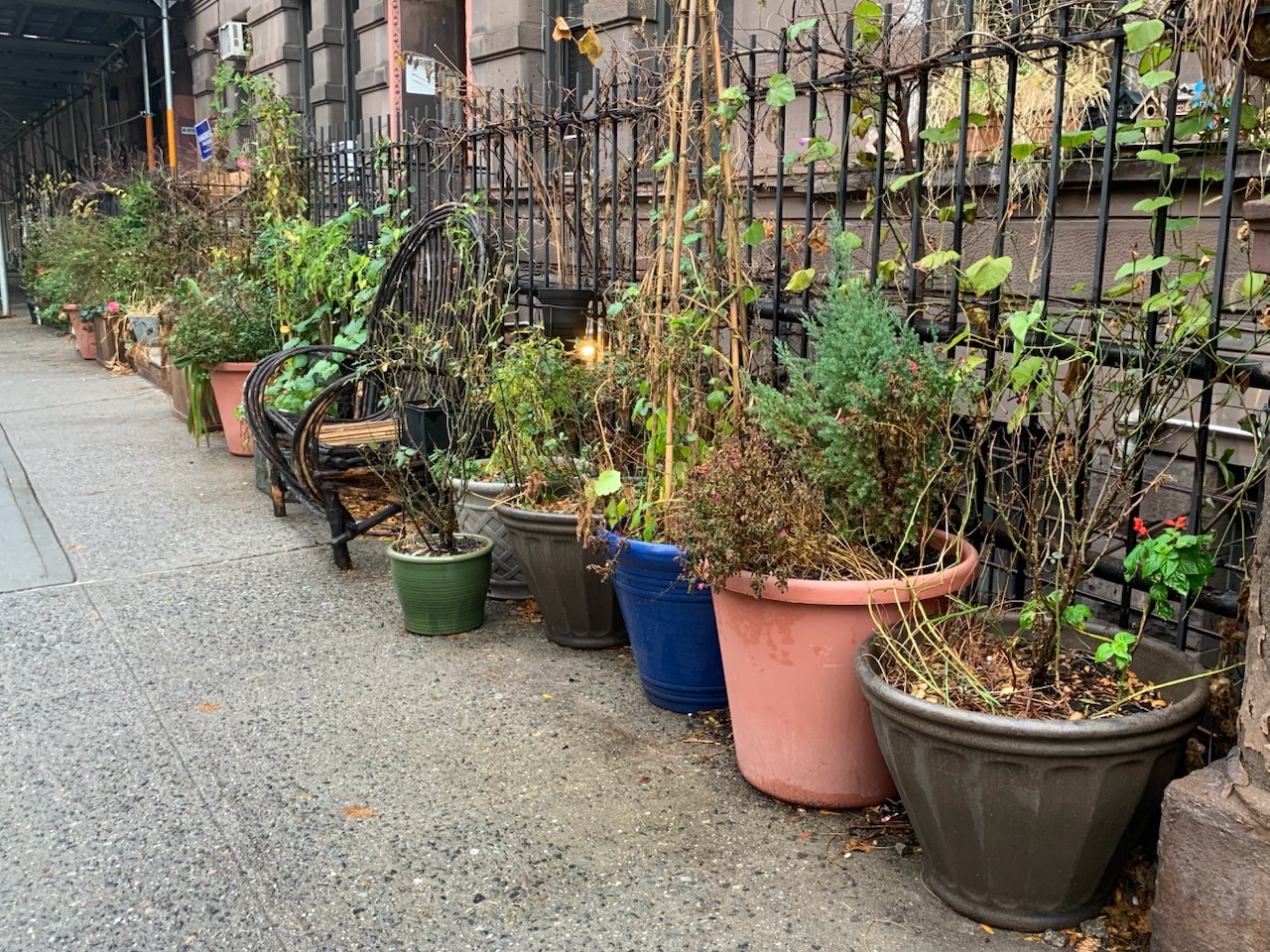
I spent more than an hour last week, rearranging all of the planters on our sidewalk, dragging them back and forth to create a pleasing arrangement for the season ahead — then looked out my window the next morning and discovered that the facade-repair project next door was extending their scaffolding twenty feet further to cover part of our building, blocking the sunlight to that end of the garden.
And they say the scaffolding will likely remain in place for a full year!
I’ve now managed shift most of the planters down the block, but still need to tackle the espaliered tree that has its branches woven inextricably into the iron fence… moving it will require cutting off a significant number of branches, but if I leave it in place, it will probably die due to lack of light.
It’s very frustrating.
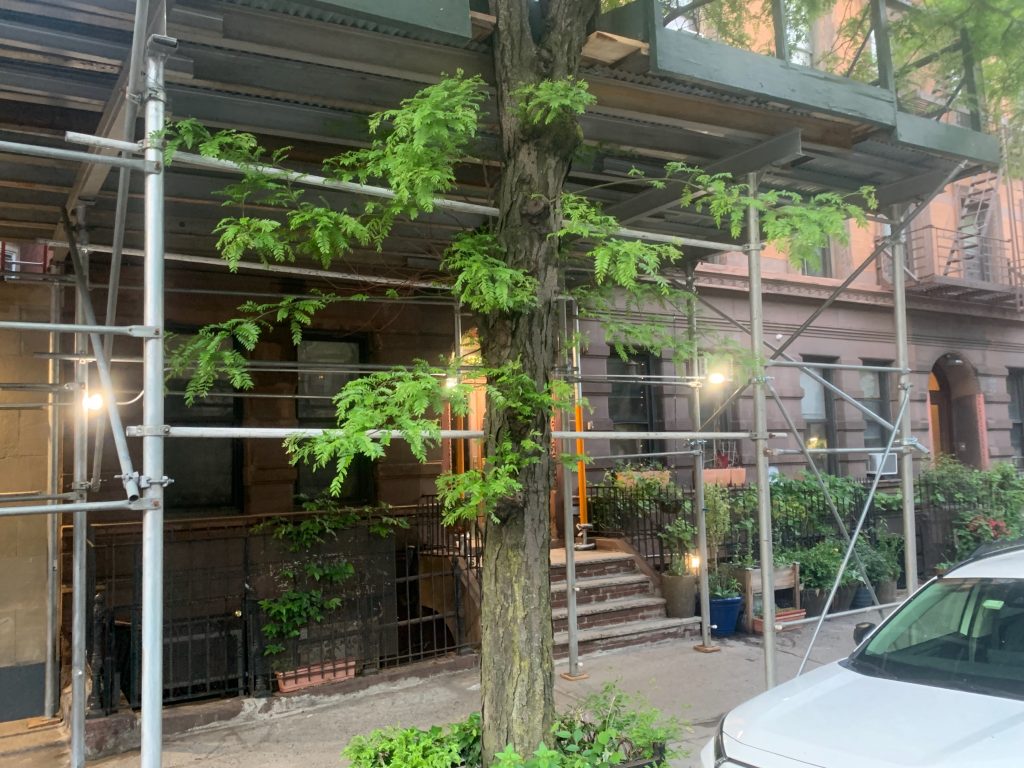
Every December, many of the city’s residents bring home a small conifer for the winter holidays — and then discard them in early January.
Mulchfest is part of the city’s adaptation to this cycle: deploying large chipper trucks at numerous locations around the city, where people can bring their trees to be chipped, and optionally take home a bag of the resulting material to be used as mulch.
While most people just leave their tree, or perhaps take home a small bag of pine chips, there doesn’t seem to be any real limit to how much mulch you’re allowed to take, so I’ve learned to bring a shopping cart and a stack of empty tote bags, so I can bring home enough for a dozen sidewalk treebeds around the neighborhood.
The mix of pine needles, twigs, and chips will slowly break down over the coming year to provide a stream of supplemental nutrients to the soil, as well as improving moisture absorption and retention and building soil health.


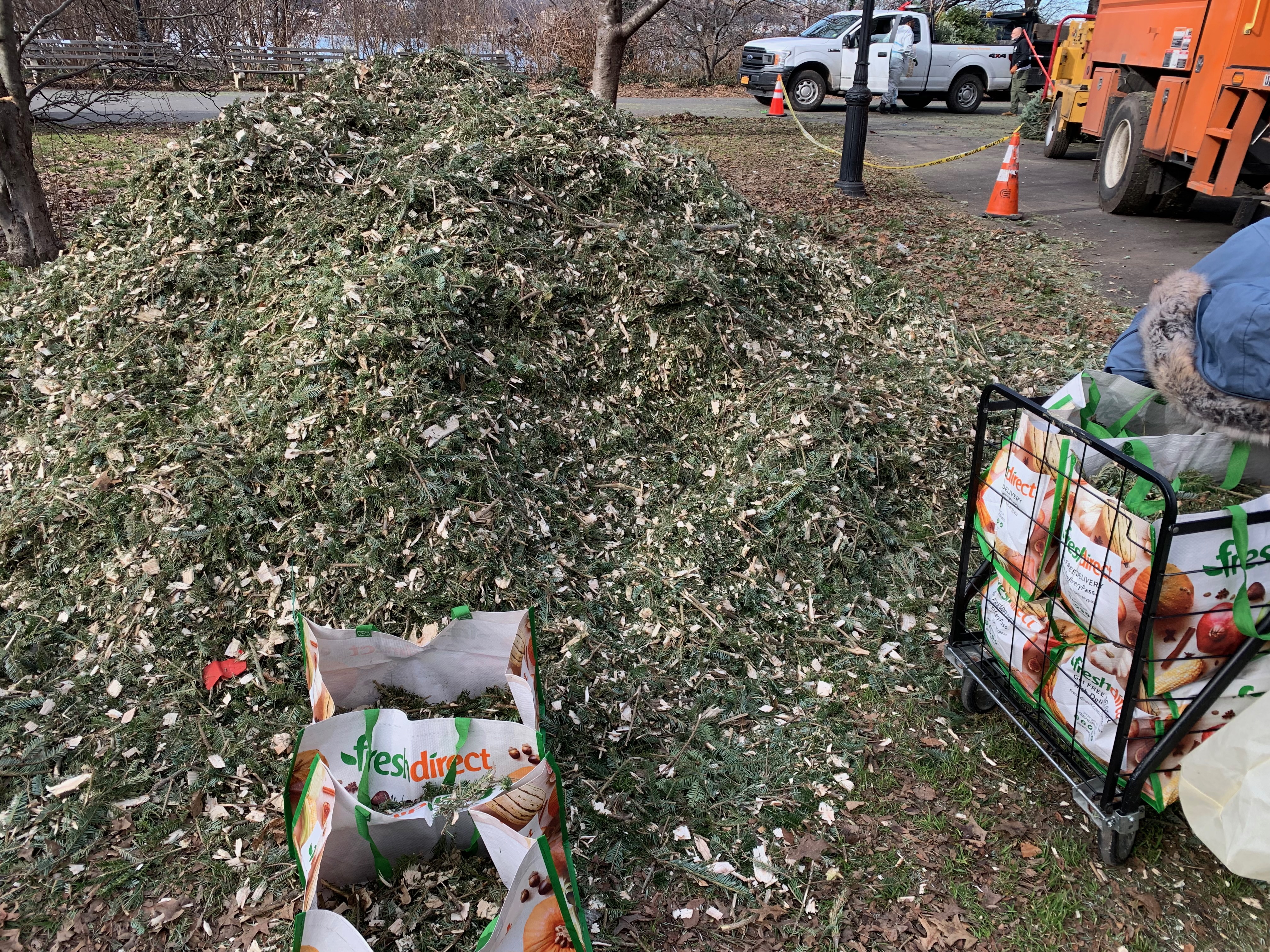
It’s mid-July and despite the heat, the garden is looking lush.
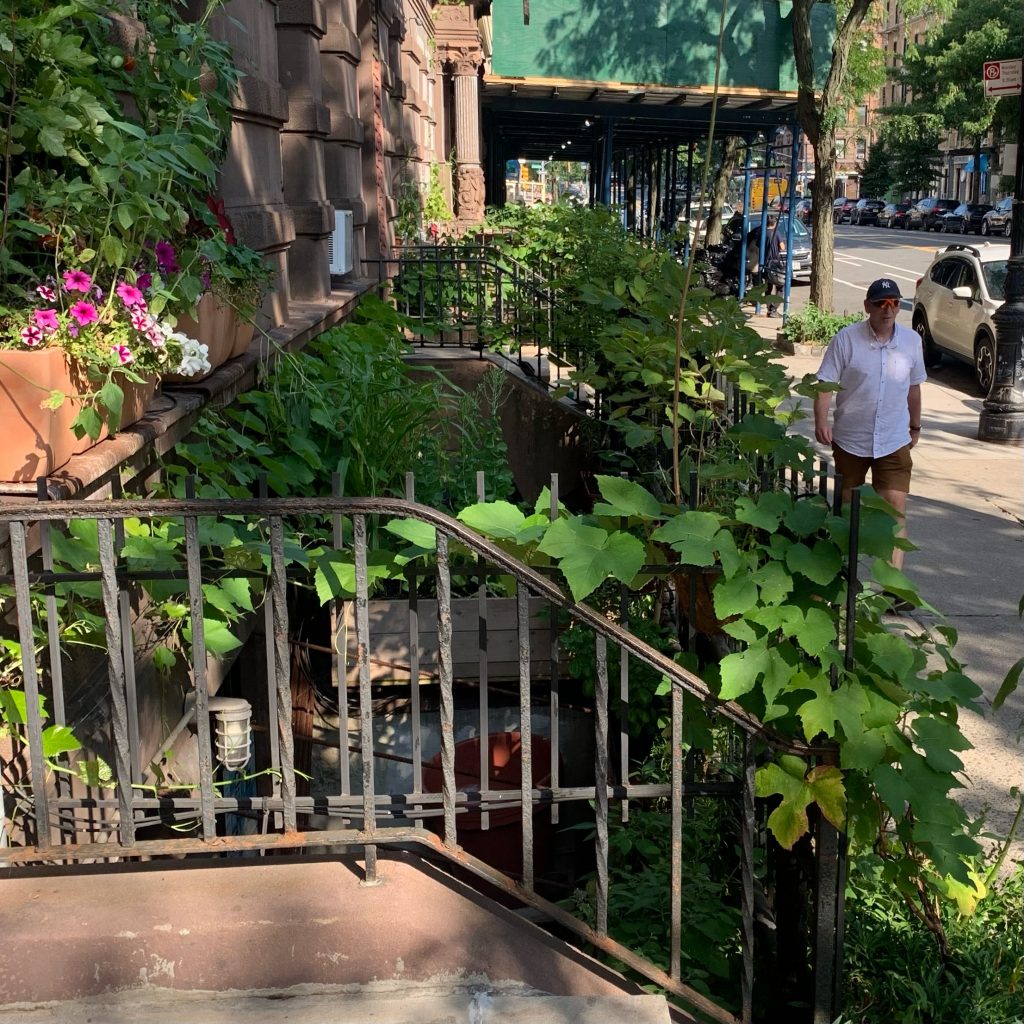
While I am generally happy to provide the limited funds needed to cover the garden’s operations, neighbors do occasionally donate supplies, for which I am very grateful.
My thanks go out to the following for items received this spring:


We took a trip to Metropolitan Plant & Flower Exchange in Fort Lee and picked up a bunch of bedding flowers to be added to the garden planters and the treebeds here and around the neighborhood, including the following: